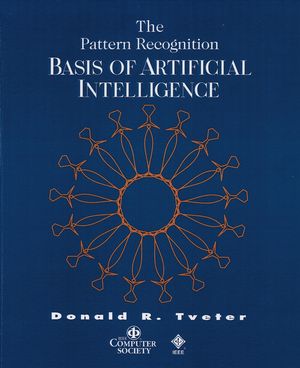The Pattern Recognition Basis of Artificial IntelligenceISBN: 978-0-8186-7796-0
Paperback
388 pages
March 1998, Wiley-IEEE Computer Society Press
 This is a Print-on-Demand title. It will be printed specifically to fill your order. Please allow an additional 10-15 days delivery time. The book is not returnable.
|
||||||
This book takes the viewpoint that plain symbol processing
techniques have little hope of reproducing the depth and breadth of
capabilities found in human beings. The book introduces new
foundational principles to AI: connectionist/neural networking
methods, case based and memory based methods and picture
processing.
The book looks at methods of AI as different ways of doing pattern recognition. One way to do pattern recognition is to compare a problem to stored cases. At the other end of the spectrum, Classical Symbol Processing AI compresses cases down to a small set of rules and then works only with this condensed knowledge. In between these two extremes are neural networks, especially backprop type networks. As much as possible the book compares these three basic methods using actual AI programs.
The structure of the book starts at the bottom of human abilities with vision and other simple pattern recognition abilities and moves on to the higher levels of problem solving and game playing and finally to the level of natural language and understanding of the world. At the higher levels more complex computer architectures are needed that include methods for structuring thoughts.
The book is organized in a manner in which the reader will get an intuitive feeling for the principles of AI. Throughout the book applications of basic principles are demonstrated by examining some classic AI programs in detail. The book can serve as a text for juniors, seniors and first year graduate students in Computer Science or Psychology and includes sample problems and data for exercises and a list of frequently asked questions.
The book looks at methods of AI as different ways of doing pattern recognition. One way to do pattern recognition is to compare a problem to stored cases. At the other end of the spectrum, Classical Symbol Processing AI compresses cases down to a small set of rules and then works only with this condensed knowledge. In between these two extremes are neural networks, especially backprop type networks. As much as possible the book compares these three basic methods using actual AI programs.
The structure of the book starts at the bottom of human abilities with vision and other simple pattern recognition abilities and moves on to the higher levels of problem solving and game playing and finally to the level of natural language and understanding of the world. At the higher levels more complex computer architectures are needed that include methods for structuring thoughts.
The book is organized in a manner in which the reader will get an intuitive feeling for the principles of AI. Throughout the book applications of basic principles are demonstrated by examining some classic AI programs in detail. The book can serve as a text for juniors, seniors and first year graduate students in Computer Science or Psychology and includes sample problems and data for exercises and a list of frequently asked questions.



